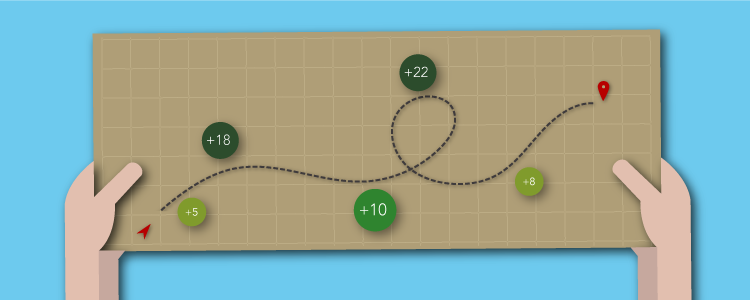How do you find your next pair of pants? Do you go to a store that you have never been before, look at unfamiliar brands, and try on 12 different sizes? Well, if you do what I just described, let me give you a hint: you are doing it wrong. When most rational human beings decide that they need a new pair of pants, they go to a familiar store, find their favorite brand, and likely know the exact measurements of the pants that will fit their body type and/or style preference. Shouldn’t this be how we find our next customers? This blog addresses how lead scoring can be utilized to help you determine which leads are like your current pair of pants and which leads are like choosing a pair blindfolded in a department store.
The way marketers use lead scoring to find ideal fit prospects has evolved over the years. For most marketers, lead scoring is based on the prospect’s profile attributes and how they match the organization’s ideal profile definition. The profile score provides insights into what an ideal lead looks like, so marketers can create campaigns for that audience. Profile score includes factors such as title, company size, revenue, geographic location, as well as technical data and previous marketing efforts that have led to conversions. Many people can think of profile scoring as a way of quantifying buyer personas, which are quickly becoming necessary and important for B2B marketers and salespeople.
For Right On Interactive, this is only the first phase of lead scoring or what we refer to as 3D Scoring. In addition to profile scoring, we utilize engagement scoring as well. Engagement scoring indicates a prospective customer’s level of interest, based on their past activity and engagement with your brand. Engagement measures the following things:
- Email Responses: Simple enough. Are they opening your email responses and reading them? Are they responding to you?
- Web Activity: Are they checking out your website? Are they downloading your resources? How often?
- Sales Engagement: Are they meeting with your sales representative face to face or virtually? Are they having phone conversations?
- Purchase History: Have they bought from you before and if so, how often?
- Social Conversations: How connected and active are they with you on social media platforms?
The third piece of the 3D Scoring puzzle takes into consideration where a contact is in their journey with your brand. We refer to this as the lifecycle stage. This last piece is crucial as marketers, sales representatives and client success managers all communicate differently with contacts who are in different stages of the company’s lifecycle. Take for example a first-time visitor to your website versus someone who recently purchased a good or service. Both may have the same profile score and even similar engagement, but their lifecycle stages are drastically different and determine not only the message they should receive but also who should send it.
By taking into account the lifecycle stage, profile and engagement scores in a comprehensive view of a contact, leads and customers alike can be scored from a more effective three-dimensional perspective. Not only can this method improve communications and conversions, but it can also help measure the success of sales, marketing and client success teams.
So next time you are taking a look at that list of inbound leads, think about profile score (store), engagement score (brand), and size (Customer Lifecycle Marketing stage). Determine if this pair of pants is like all of your others that fit or if it’s going to take a little extra work to squeeze into them.
For more information on lead scoring, check out this infographic or download our Action Guide to Lead Management Success.

